Every year on July 27, Americans recognize the National Korean War. This day celebrates veterans of the Korean War, one of the most brutal and dangerous wars in United States history. The history and significance of July 27 is deep, and the national holiday gives Americans the chance to honor the service members who sacrificed so much during the Korean War.
A refresh on the Korean War
The Korean War began on June 25, 1950 when North Korea invaded South Korea. The conflict had been brewing for some time. When this military action took place, American troops were deployed by July on behalf of South Korea. America had to take a stand against communism and a harsh, three-year war followed.
Not only did combat itself kill many soldiers, but the hot, humid climate also took a toll on those who occupied the Korean peninsula. Civilian deaths as a result of bombings and other conflicts contributed massively to the total casualties, which was about 5 million, though the total number is still uncertain because North Korea did not release casualty numbers.
Almost 40,000 Americans died in the war, and more than 100,000 were wounded. At the time, there was not as much media coverage of what was happening in Korea, especially when compared to World War ll and the Vietnam war. This led to the Korean War being called "The Forgotten War." Veterans of the war were not treated with as much reverence, as it seemed that Americans wanted to forget this tragic period.
For several years, armistice agreement negotiations were underway, to no avail. That is, until July 27, 1953. On that day, the Korean People's Army (KPA), the Chinese People's Volunteer Army (PVA) and the UN Command signed the Korean Armistice Agreement, and America officially took its troops out of Korea, despite South Korean president Syngman Rhee refusing to sign the agreement. The agreement did not include a peace treaty, but did require North Korea, South Korea, China, and the United States to continue their peace talks.
National Korean War Veterans Armistice Day
National Korean War Veterans Armistice Day is a time to remember the tragedies that occurred during the Korean War and to commemorate those who died in active duty, disappeared as prisoners of war, or were seriously injured in service.
In memoriam, every year the President of the United States issues a proclamation calling on the nation to observe National Korean War Veterans Armistice Day with appropriate ceremonies. American flags across the nation rest at half mast out of respect.
The Korean War Veterans Memorial located in Washington, D.C. was erected on July 27, 1995. If you ever visit the memorial, you will be able to read its inscription: "Our Nation honors her sons and daughters who answered the call to defend a country they never knew and a people they never met."
Take the time to thank a veteran, volunteer in your community, or simply reflect on the impact that the Korean War has on our American legacy.
The Fourth of July is arguably the most patriotic and exciting of the summer holidays. Americans look forward to the extended weekend, cookouts, and an evening of beautiful fireworks. The root of the July Fourth holiday lies in the passing of the Declaration of Independence by the Continental Congress in 1776. The original 13 colonies declared their autonomy from Great Britain and created the earliest version of the United States of America, which is certainly worth commemorating.
A brief history of America
Every proud American has a general idea why the fourth day of July is so special in U.S. history, but the ins and outs of our independence is not as cut and dry as you may think. In fact, this time in American history is so nuanced that there are historians who spend their entire careers studying the Declaration of Independence and the Revolutionary War. The average person does not need to have that level of dedication, but it may be worth taking the time to refresh your Independence Day knowledge.
A first draft
A year after the Revolutionary War began, the Continental Congress was receiving increased pressure to vote on the issue of independence. Initially the war had begun because the colonies were fighting for their rights and had no intention of declaring independence, but there was growing support for complete separation a year later. Because of this, a committee focused on the issue was formed in order to draft a formal statement. The committee was made up of Thomas Jefferson, John Adams, Roger Sherman, Robert R. Livingston, and Benjamin Franklin.
Signing the declaration
After about a month of working on the document, Congress formally declared independence on July 2 via a democratic vote. John Adams even noted that the second day in July would go down in American history. However, July Fourth became the official date of ratification on the declaration, and the signing wasn’t completed until August 2. In the end, 52 people signed the Declaration of Independence.
244 years of celebrating
While John Adams was two days off, he was correct when he said Independence Day would be marked with fireworks and celebrations annually. Several days after the first Independence Day, public readings were held in Philadelphia’s Independence Square to the sound of church bells and music.
The following year at the Independence Day celebration, Congress adjourned in Philadelphia and marked the occasion with fireworks, bells, and music, just like those public readings in 1776.
At first, the tradition was mostly recognized in Philadelphia, but soon other towns and cities took up celebrating the holiday. On September 3, 1783, the Revolutionary War ended and America became its own country when the Treaty of Paris was signed by representatives of King George III.
In 1870, Congress officially passed a law making Independence Day a national holiday. At that time, Americans were spread across the continent, but even pioneers on the western frontier managed to gather together to celebrate the new federal holiday. In 1938, Congress made it a paid holiday for federal employees, reaffirming the importance of the day in American history.
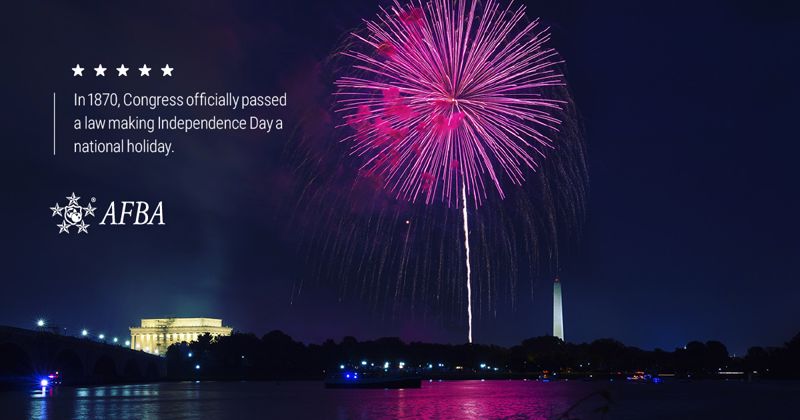 “The appearance of U.S. Department of Defense (DoD) visual information does not imply or constitute DoD endorsement.”
“The appearance of U.S. Department of Defense (DoD) visual information does not imply or constitute DoD endorsement.”Today, Americans mark the patriotic holiday by with red, white, and blue decorations, watching parades, and celebrating the freedoms afforded us so many years ago. Fireworks are still a huge part of the occasion, with 33% of people plan on marking the day with beautiful pyrotechnics.
This year, while you celebrate with family and friends, be sure to take a moment to reflect on everything that has happened in order to allow us the American freedoms we enjoy today.
June 14th of every year marks the United States Army’s birthday. The 14th day of June 2021 was the Army’s 246th year of existence. Having been created in 1775, the Army is the oldest branch of the US military and is soaked with a richly fascinating history. The Army’s many years of committed service to the country truly reflect the branch’s dedication to defense.
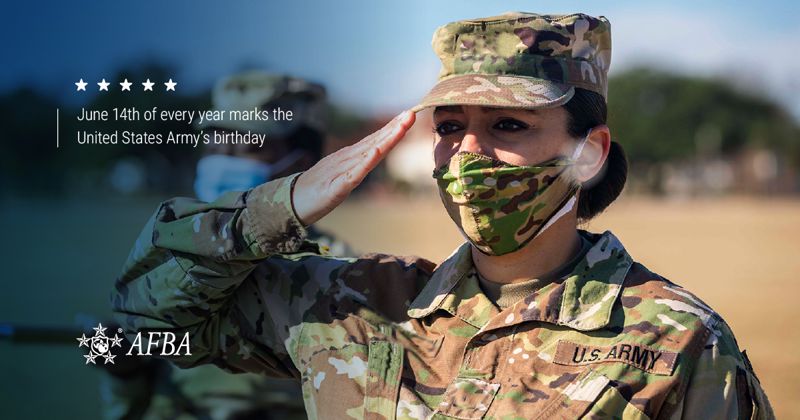 The appearance of U.S. Department of Defense (DoD) visual information does not imply or constitute DoD endorsement.
The appearance of U.S. Department of Defense (DoD) visual information does not imply or constitute DoD endorsement.Historical legacy
The U.S. Army’s legacy started nearly in tandem with the United States itself. In 1778, the Army claimed the motto “This we’ll defend,” and has taken the phrase seriously ever since.
Revolutionary War (1775)
During the rise of civil unrest of the 1770s, the original 13 colonies formed the first version of a U.S. armed forces. The 2nd Continental Congress created the Continental Army as a means of revolting against the rule of Britain. This initial version of the army fought its first battle in 1776, and the 20,000 revolutionaries were forced to retreat by the much more sophisticated redcoats.
With grit and determination that remains today, the army rallied and followed its commander in chief, George Washington, to victory. The U.S. Army is inextricably linked with the United States of America’s brave and independent origins.
The Civil War (1861)
Nearly 100 years later, the United States Army was called into action and underwent a major renovation. The Civil War era was a very important time for weapons technology development in the army. The result was the most deadly war in the Army’s history.
World Wars (1917/1941)
It took many years for the army to build itself back up from the destruction the Civil War wrought. The first world war saw the advancement of the army’s technological sophistication as well as the creation of 17 new National Army divisions. This included the Aviation Section of the Army Signal Corps, which was the predecessor of the Air Force.
Some cite the second World War as being the beginning of the United States Military as we know it today. WWll was also a very important time for the evolution of modern battlefield strategy with the invention of the atomic bomb.
Modern day
Every era of major conflict (many of which are not named here) has resulted in a more advanced and strategic Army, but it’s roots of bravery and valor have remained at its core since the beginning. Today, the United States Army has more than 700,000 members, including both active duty and Army reserve.
Every year on June 14th, members of the Army and their families come together to celebrate the Army’s birthday with balls, dinners, parades and parties. This year was no exception. It was a time for modern-day servicemen to remember and commemorate the incredible history of their branch.
Just like every year, the Pentagon and Capitol Hill recognized the anniversary of the Army through a traditional cake cutting ceremony, using a classic Army saber. Even those who are not directly tied to the United States Army took a brief moment to recognize our country’s oldest military service.
The creation of Women Veterans Day in 2018 was meant to recognize the unique struggles and sacrifices of female servicemembers. The holiday is on June 12th and celebrates all women who have served in the armed forces. Though not nationally recognized, more and more states are starting to adopt it.
A brief history of women in the military
Women have provided military service in many different ways since the beginning of the United States’ military. From holding positions as nurses and seamstresses to helping raise money for the war efforts, women have always played an important role in the military.
Early efforts
Outside of these roles, there are many stories of women covertly enlisting in the Civil War era military as spies and even soldiers. Frances Clayton, Nancy Morgan Hart and Deborah Sampson are just a few of the women who disguised themselves as men to fight for their beliefs in the Civil War.
The first woman to formally enlist in the military was Loretta Walsh. In 1917, she became a member of the Navy and acted as the ship’s secretary. It did not take very long for other women to begin formally joining the armed forces.
Women’s Army Corps (WAC)
The Women’s Army Corps was created during World War ll to allow women to assist the war effort in non-combat positions. This allowed 150,000 women to serve their country and opened up America to the idea of a woman among the ranks of the military.
The Women’s Army Corps came into existence thanks to Rep. Edith Nourse Rogers. This was a huge step forward in gender integration, but it expired in 1948. Despite this, there was a huge demand for women to be permanent members of the military.
Women’s Armed Services Integration Act
Directly after the expiration of WAC, the Women’s Armed Services Integration Act was passed and granted women the right to serve in the Army, Navy, Marine Corps and the Air Force.
Modern women in the military
Today, it is nowhere near uncommon for a woman to join the military, and both genders are recruited equally. Generally speaking, there are still more men in active duty than women, but overall trends show an increase in female servicemembers. Despite this, retaining female recruits is far more difficult than the retention of male recruits.
This exposes unique challenges that women face as a part of the military, struggles that each branch works diligently to eliminate. The United States Government Accountability Office released a report in March 2021 that details a retention plan. The report notes this discretion while reporting that the Department of Defense plans on “updating its diversity and inclusion strategic plan.”
Women as veterans
Women make up at least 10% of all living veterans, most of them having served in the Gulf War. Aside from the normal struggles that all veterans face regardless of gender or race, minorities can face additional hardship. Much like their male counterparts, 28% of female veterans are disabled and are unable to find work due to their disability.
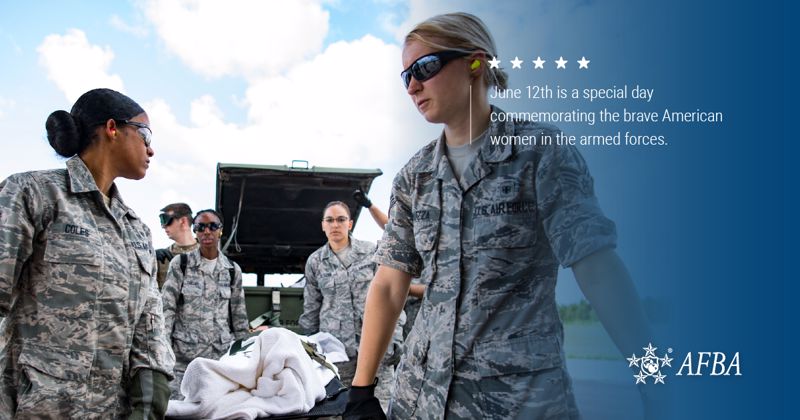 The appearance of U.S. Department of Defense (DoD) visual information does not imply or constitute DoD endorsement.
The appearance of U.S. Department of Defense (DoD) visual information does not imply or constitute DoD endorsement.Womens Veterans Day is an opportunity to thank those women who have given their lives in active duty and those who have dedicated so much in service to the United States of America. June 12th is a special day commemorating the brave American women in the armed forces.
For some, Memorial Day simply represents a three-day weekend and the unofficial beginning of summer. But for many of us, Memorial Day commemorates and celebrates those brave soldiers who sacrificed their lives for the country.
The history and traditions of Memorial Day go back a long way, from the history of casual observances to the first official observances in the U.S. Today.
Origins of Memorial Day
Since antiquity, people have remembered fallen soldiers with parades and memorials.
In the U.S., the first traces of what would become Memorial Day began a few weeks following the end of the Civil War. On May 1, 1865, a regiment of African American Union troops along with more than 1,000 newly freed individuals, marched a procession into a former prisoner of war camp in Charleston, South Carolina. There, the group consecrated a burial site for the more than 250 prisoners who died of disease or exposure. They sang hymns, recited Bible verses and scattered flowers on the graves of the fallen.
Then, on May 5, 1866, the city of Waterloo, New York, held a community-wide ceremony honoring the local Civil War veterans. Residents flew flags at half-mast, businesses closed for the day and vigils were held.
Three years later, in 1868, the Grand Army of the Republic (GAR) established Decoration Day as May 30. The idea was to decorate the graves of the fallen soldiers with flowers, and this day was chosen as many flowers would be in full bloom. Though some legends say this was chosen because no Civil War battles took place on May 30.
May 30, 1868, marks the first observance of Decoration Day. Ceremonies were held at Arlington National Cemetery with General Ulysses S. Grant presiding over the solemn occasion. Small American flags and flowers were placed on the graves of soldiers, a tradition that carries through to this day.
Since that time, however, more than 25 different locations around the country have claimed to be the birthplace of Decoration Day or Memorial Day. In 1966, President Lyndon Johnson and Congress declared Waterloo, New York, as the original home of Memorial Day. Then, in 1971, Congress passed an act declaring Memorial Day a national holiday, and moving the day of remembrance to the last Monday in May.
Memorial Day's Legacy Continues
Although it's been a long journey from the original Decoration Day to the holiday as we know it, today, the tradition and legacy of Memorial Day holds strong across the country and the U.S. military bases around the world.
Most recently, Congress passed the "The National Moment of Remembrance Act" and President George W. Bush signed it into law in December 2000. The act encourages all people in the U.S. to give something back to their country, and to help coordinate commemorations in honor of those who gave their lives in service for the country.
The National Moment of Remembrance is at 3 p.m. on Memorial Day. Remember our fallen soldiers during this moment of silence at your local time.
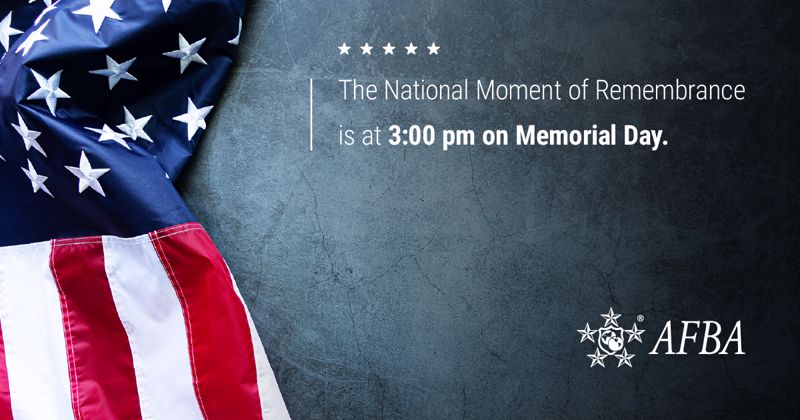
This can be done anywhere you are, even if you're out with friends or at a cookout with family. Spread the word about the National Moment of Remembrance to help ensure everyone understands what this serious day means for servicemembers and their loved ones.
Every year on the third Saturday of May, the United States comes together to celebrate and honor our active-duty servicemembers for Armed Forces Day. This day falls toward the end of Armed Forces Week.
This holiday provides Americans the opportunity to acknowledge the contributions of active-duty servicemembers in all six branches of the U.S. military, including the newly formed Space Force, as well as National Guard and Reserve components.
The history and significance of Armed Forces Day
In 1947, President Harry S. Truman signed the National Security Act, which unified the four branches of the military under the Secretary of Defense.
To honor this unification, U.S. Secretary of Defense Louis Johnson announced the creation of an Armed Forces Day on August 31, 1949. The aim was to consolidate the then-current individual Army, Navy, Marine Corps and Air Force Days, which all fell on different dates. These branches still celebrate their own days in addition to the joint observance.
In an excerpt from the Presidential Proclamation on the creation of the Armed Forces Day, President Truman said:
"Armed Forces Day, Saturday, May 20, 1950, marks the first combined demonstration by America's defense team of its progress, under the National Security Act, toward the goal of readiness for any eventuality. It is the first parade of preparedness by the unified forces of our land, sea, and air defense."
This holiday differs from other military and service-related holidays, such as Memorial Day or Veterans Day, which are for honoring fallen soldiers.
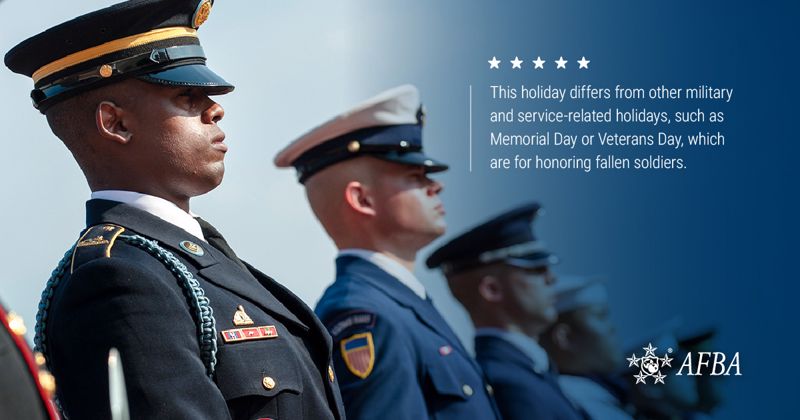
How you can celebrate and Observe Armed Forces Day
If you're close to a military base, many of them host parades, open houses, festivals, parties, picnics, receptions and, in some cases, even air shows.
For instance, the city of Bremerton, in Washington State, has been hosting its Armed Forces Day Parade for more than 70 years. The city is home to the Puget Sound Naval Shipyard and the Bremerton Annex of the Naval Base Kitsap. With average annual attendance of 25,000 to 40,000 spectators and participants, this parade is quite the spectacle to behold. Although this momentous event has had to be greatly scaled back due to the pandemic, its organizers are confident in returning to full force when it becomes possible.
If you're unable to travel to a military base, there are still plenty of options to observe this day.
You can:
- Organize a "Support the Troops" bike rally — either motorcycle or bicycle — and ride around your neighborhood to raise awareness.
- Visit a local public military display, such as a memorial or cemetery. These are good places to pay your respects, while also potentially learning some new information about a historical event and the personnel involved. Sometimes these locations will also host seminars, musical performances or ceremonies on Armed Forces Day.
- Keep it simple and host a barbecue with family and friends, or go on a picnic. This will also provide a great opportunity to spread awareness and raise understanding of this special day that honors those who sacrifice so much.
In addition, some stores and restaurants offer discounts and special deals for servicemembers and their families on these days.
Any veteran who has worked with the Department of Veterans Affairs (VA) to receive GI Bill benefits know the process can be challenging. In an effort to address this issue and provide a more streamlined experience for veterans, the VA will build and launch a new online platform for the management of most GI Bill benefits.
An innovative platform for accessing tuition benefits and more
Accenture Federal Services won the VA contract, and is working closely with the VA to create a user-friendly digital platform.
Following 2017 legislation, the VA has been working hard to update the way veterans can receive tuition and other benefits for higher education. However, these previous attempts led to glitches and other problems, which prompted the department to request additional funds from Congress. The CARES Act, the initial coronavirus relief package Congress passed in March 2020, allocates $243 million for this Digital GI Bill Modernization project.
Although this will be a multi-year, joint undertaking, the VA is optimistic that it will provide a modern, fully integrated solution for the nearly 1 million veteran students the department serves each year.
Goals of the Digital GI Bill Modernization
Currently, the VA distributes around $12 billion dollars worth of benefits using up to 23 different legacy computer systems. Claims processors are required to toggle between the systems, manually transferring data and performing duplicative duties. All this extra, time-consuming work creates more opportunities for human error that can slow down benefit distribution.
The features being developed in this modernization project include:
- Improved customer support and financial services. This will allow for more timely and accurate payment delivery with real-time eligibility and access to benefit information.
- Upgraded communication tools. With these refreshed tools, the VA will be able to call, email, text and chat directly with beneficiaries, as well as grant access to records.
- End-to-end systems management. This will enable proper compliance and oversight of GI Bill programs. It will also ensure the effective use of data and business intelligence tools to track, monitor and measure school and student outcomes.
- New program and policy requirement supports. As the academic community and job market continue to evolve, this will ensure the VA keeps pace with these changes.

Ultimately, the upgraded platform will provide veterans with the advantages of a new, modernized system with real-time support from VA staff. This includes better troubleshooting assistance with payment issues as well as easier, faster access to beneficiary records for VA staff.
While the VA has experienced setbacks with attempts to modernize other major programs, such as electronic health records modernization, the department is hoping for strong progress. By hiring an experienced systems integrator and software developer, the VA will be able to deliver improved services for veterans.
Since the GI Bill's implementation following World War II, the program has been instrumental in ensuring veterans have the means to access higher education and more. This digital modernization effort will guarantee distribution of these benefits, and will evolve alongside the available technology to make the entire process more efficient and streamlined.
Each year in April, families, communities and people of all stripes come together to celebrate military children and applaud them for surmounting unique challenges.
The Department of Defense Education Activity (DODEA) commemorates this month with its "Purple Up!" campaign, in which people wear and display the color purple to show support for the children of soldiers. The military chose this color with the reasoning that purple combines each branch's colors into one, since the Air Force, Navy and Coast Guard all use shades of blue, the Army uses green and the Marines use red.
Month of the Military Child: A backstory
Established by former Defense Secretary Caspar Weinberger in 1986, the Month of the Military Child has since become an annual tradition for military families deployed worldwide. More than 1.7 million total force-dependent children across the globe face obstacles unlike most others their age. Wearing purple helps let them know you care.
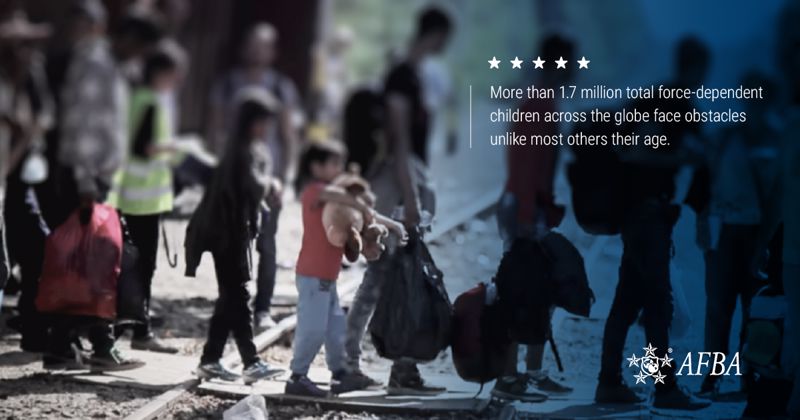
While the entire month of April is set aside to celebrate children of soldiers, the military also designates a single day during the month as "Purple Up! For Military Kids" Day. This typically falls halfway through the month, at or around April 15 each year.
Many military-related private organizations put a special emphasis on the programs they administer and provide downloadable toolkits and other resources for military children and families.
Additionally, participating Exchange restaurants worldwide will often offer free treats or other specials for any child who wears purple during the month.
How you can Purple Up! this April
Although schools and workplaces are not closed for Purple Up! Day, there are still plenty of creative ways to observe this important occasion. Many military bases and communities celebrate with special events, such as contests, parades, fairs and seminars all centered around the central message of supporting military children.
In addition to wearing purple throughout the month, anyone not currently stationed at a military base can consider trying some of these activities to observe the Month of the Military Child:
- Work with local schools, governments, businesses and organizations to raise awareness of this observance.
- Spread the word by using the #purpleup hashtag on social media or putting up purple flyers in community centers.
- Write a letter to your local newspaper that recognizes and celebrates military children.
- Create an award, or use one created by Blue Star Families, to let a military child know that they're awesome.
- Print out and pass around Purple Up! labels from the Military Child Education Coalition.
If you're already involved with the local schools and organizations, consider holding an award ceremony for military children. Be sure to include recognition of military children during morning announcements and have members or students tie purple ribbons around trees outside.
For more ways to celebrate our country's youngest heroes, check out these 50 additional ideas from the Military Child Education Coalition.
Vietnam War Veterans Day became a nationwide, yearly observance in 2017. A strong bipartisan effort to recognize the holiday on a regular schedule concluded with President Donald Trump signing the Vietnam War Veterans Recognition Act of 2017 into law. Since then, National Vietnam War Veterans Day has fallen on March 29 each year.
The roots of a dedicated holiday
This special observance recognizes all veterans who served in the U.S. military over the course of the Vietnam War, which spanned nearly 20 years of escalating conflict.
The first U.S. ground combat troops — 3,500 Marines — arrived in 1965, according to The Atlantic. By early 1973, when U.S. combat forces were ordered to withdraw from the country, 3,403,000 Americans had served in the armed forces during the Vietnam conflict, according to the U.S. Department of Veterans Affairs. That number includes more than 55,000 servicemembers who gave their lives for their country, and more than 150,000 who were wounded.
Despite meritorious service from so many servicemembers and the ultimate sacrifice made by tens of thousands of U.S. troops, the tense and complex social and political climate of the mid-1970s meant that many returning veterans were denied a proper welcome home, as the National Conference of State Legislatures explained. National Vietnam War Veterans Day, and the somewhat irregular state- and territory-level observances that preceded it, are an effort to belatedly recognize the valiant efforts of U.S. troops who served in this war.
The date of the observance is especially significant for veterans. March 29, 1973 was the day the last combat troops left Vietnam.
Supporting Vietnam veterans every year
Military Benefits estimated a total of 6.4 million Americans living today served in the armed forces during the Vietnam War.
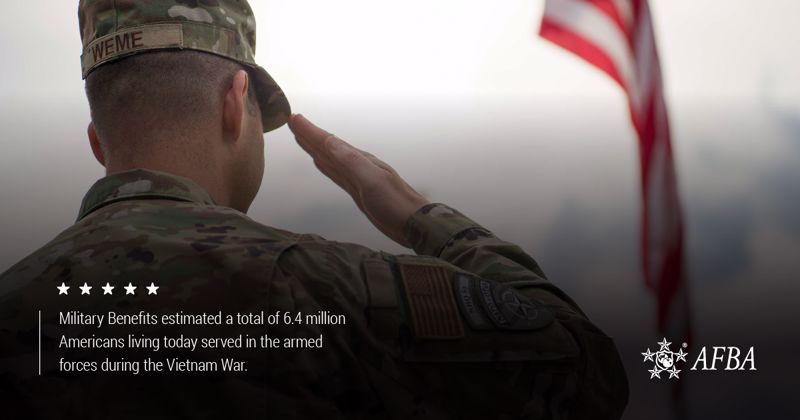
The holiday takes this into account: It officially recognizes all personnel with active-duty service between Nov. 1, 1955 and May 15, 1975. This inclusive approach celebrates and shows respect to all Vietnam veterans regardless of other details such as length of service, where they were stationed and which duties they performed.
A single, national date for the observance also raises cultural awareness as events across the country fall on the same date on a predictable, yearly schedule. Instead of most, but not all, states and territories holding observances on or around March 29, the entirety of the U.S. recognizes a unified event.
Safely recognizing National Vietnam War Veterans Day during a pandemic
Memorials and ceremonies recognizing and thanking Vietnam veterans for their service have developed across the country since the conflict ended. They represent untold hours of organizing and effort on the part of veterans groups, nonprofits, government agencies and others who want to provide the appropriate respect and gratitude to the Americans who served in this conflict. While the coronavirus pandemic has curtailed many in-person gatherings, the U.S. Department of Defense (DOD) highlighted many examples of safer events that still effectively thank and remember Vietnam veterans.
The DOD listed three goals for the 2021 observance of this event, and for every March 29 in the future:
- Thanking and honoring Vietnam veterans for their service and sacrifice.
- Connecting with veterans who are isolated or hard to reach.
- Supporting the healing that occurs when veterans denied a proper welcome home after their service finally receive the recognition they deserve.
As March 29 approaches, take some time out of your day to recognize the Vietnam veterans in your own life and community.
Nearly 100 years ago in 1926, Carter G. Woodson, a scholar of African American history and the African diaspora, set aside a week in February for the recognition and remembrance of Black history. Fifty years later during the U.S. bicentennial, President Gerald Ford extended this into the federal observance now known as Black History Month.
Ford urged the nation to "seize the opportunity to honor the too-often neglected accomplishments of Black Americans in every area of endeavor throughout our history."
This February, we are honoring the accomplishments of Black servicemembers in the armed forces by sharing a timeline of several notable firsts that contributed to key turning points in military history, from 1770 to the present.
1770: Crispus Attucks, first American casualty in the Revolutionary War
Crispus Attucks, a former enslaved person and dockworker of African and Native American descent, joined a group of Boston patriots in protest against British soldiers. He was fatally shot, becoming the first American to sacrifice his life in defense of the colonies. Tens of thousands of Black soldiers would ultimately serve in the Revolutionary War. Attucks was honored at the time of his death and would later become a symbol for the abolitionist movement.
1863: William Carney, first Black Medal of Honor recipient
William Carney enlisted in the first Black unit recruited for the Union Army — the 54th Massachusetts Infantry Regiment — where he served alongside 40 other Black service members. When the unit's color guard was shot during battle, Carney sustained enemy fire and nearly lost his life in an effort to ensure that the American flag did not touch the ground. His moving and valiant patriotism was acknowledged in 1900 with the Congressional Medal of Honor. As of 2020, 92 remarkable Black servicemembers have since been awarded the Medal of Honor.
1917: Harlem Hellfighters, first all-Black combat unit to serve overseas during WWI
During the First World War, the 369th Infantry regiment — known as the Harlem Hellfighters — became the first Black combat unit to serve overseas. The U.S. did not offer combat roles to African Americans, so the unit was assigned to the French Army. The Hellfighters served in the trenches for 191 days straight without getting captured or ceding any ground, earning them the Croix de Guerre.
1946: Della Raney, first Black woman to serve as an Army major
In 1941, nursing graduate Della Raney became the first Black nurse to serve as a lieutenant in the U.S. Army Nurse Corps. As the Second World War continued, Raney continued as a trailblazer in the Army, marking new firsts with each promotion. She was promoted to captain in 1944 and major in 1946. Maj. Raney continued her Army service until her retirement in 1978.
1941: Tuskegee Airmen, first Black military aviators
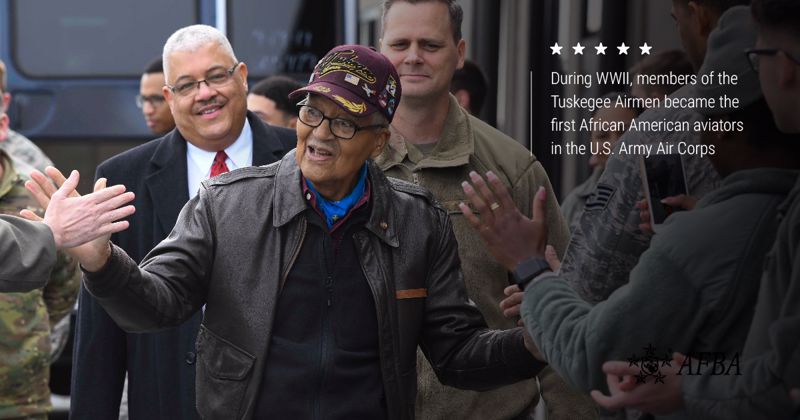
During WWII, nearly 1,000 members of the Tuskegee Airmen trained in the Jim Crow South and became the first African American aviators in the U.S. Army Air Corps, the precursor to the U.S. Air Force. They never lost an escorted plane to enemy forces despite completing hundreds of escort missions and more than 15,000 sorties. The Tuskegee Airmen earned 150 Distinguished Flying Crosses and are being recognized in 2021 with a commemorative quarter inscribed, "They fought two wars."
1989: Colin Powell, first Black Chairman of the Joint Chiefs of Staff
When he was appointed as the Chairman of the Joint Chiefs of Staff by President George H.W. Bush, Colin Powell took on the highest-ranking military position in the Department of Defense and became the first African American and youngest person to do so.
Present day
According to the latest data, roughly 224,000 servicemembers and about 2.1 million military veterans are Black Americans. These brave men and women have continued making a mark on military history thanks to their courageous contributions and service to the nation.

